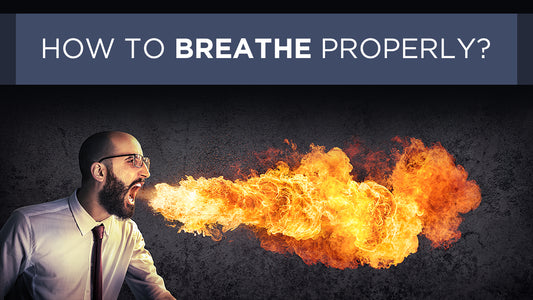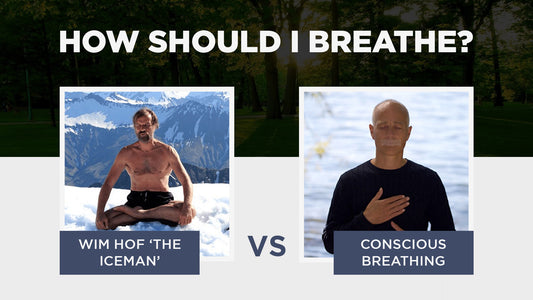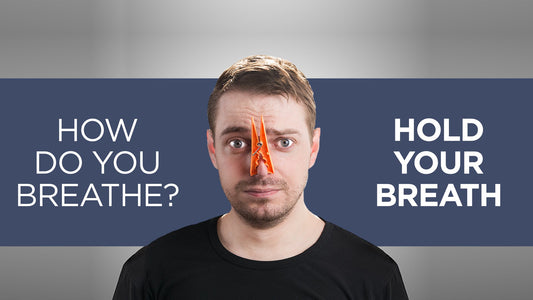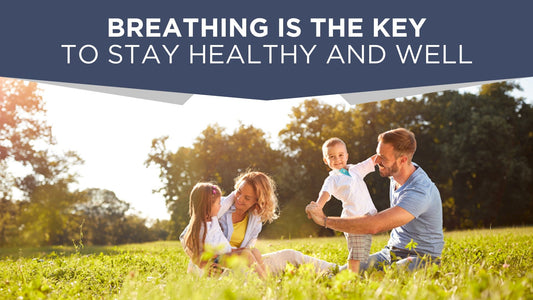
Carbon dioxide training made me feel extremely harmonious
Oxygen is usually considered to be “the” amazing, life-giving substance, while carbon dioxide is often thought of as just a toxic waste product that we need to get out of our bodies as soon as possible. However, nothing could be further from the truth. If you are skeptical, consider the following: If you had a panic attack and came to a hospital, you would get a bag to breathe into. The same applies if you are frightened of flying. The flight crew would also give you a bag to breathe into. In both cases, breathing in the bag would have a calming effect on you. Why? It would be thanks to carbon dioxide. The air we breathe out contains about 100 times more carbon dioxide than the air we breathe in. Breathing in a bag means that we are re-breathing some of the carbon dioxide we just exhaled.
During the fall of 2010, I got to fully experience the enormous power that is built into our breathing when I did my first “carbon dioxide training.” It was quite a life-changing experience, as it provided further proof to me of the power of carbon dioxide to improve performance and promote a calm and peaceful state within the body.
Two of the most important characteristics of carbon dioxide are that it,
a) causes the muscles surrounding the blood vessels to relax, which means that the blood will flow more easily, and
b) lowers the pH so that oxygen can leave the blood (called the Bohr effect) and reach our cells and organs and be useful.
The net effect of this is that more blood reaches the brain and oxygenates the brain cells better, which makes us calmer and explains why breathing in a bag works.
Carbon dioxide – our natural relaxation hormone
So carbon dioxide is actually our natural relaxation hormone. Carbon dioxide is constantly produced in our bodies, about 250 milliliters per minute, and as we breathe, we exhale the carbon dioxide that has been built up in our bodies. The more active we are, the more carbon dioxide is produced. That is why we breathe more when we are out running compared to when we are sitting on a couch and taking it easy.
Impaired breathing means we lose too much carbon dioxide, and inactivity means we produce too little carbon dioxide, which lowers the carbon dioxide pressure in our bodies. This not only creates an environment that favors fear and panic. It also promotes stress, tense muscles and impaired digestion.
But if, on the other hand, we reduce our breathing while doing physical activity, we will increase the carbon dioxide pressure in our bodies, thus promoting a feeling of relaxation.
60 minutes jogging with as few breaths as possible
One day, I decided to do what I call carbon dioxide training, which means I wanted to increase my carbon dioxide pressure as much as possible. I went out on a 60-minute jogging trip while simultaneously breathing through my nose and inhaling for 2-3 steps while exhaling for 5-8 steps. It was really, really tough to cope with this during the entire jogging trip, but since I am quite stubborn, I managed to endure.
And there was a reward afterwards. After I got home, I sat down at the kitchen table for hours, doing nothing and feeling incredibly relaxed and harmonious. I was in an almost blissful state and had never experienced anything like it before. It was almost as if I was looking around wondering, Where are the angels? Since then, I have done carbon dioxide training on many occasions, and the harmony is absolutely amazing! You can easily try this yourself. It will work just as well when walking or biking.
Meditation is another example of an activity where we increase the carbon dioxide pressure in our bodies. This happens because we slow down breathing as we meditate. Slow and low breathing is the essence of meditation. By applying Conscious Breathing in your daily life— when you sleep, exercise, talk, work and so on—and breathing slowly, low and rhythmically through your nose, you can take advantage of all the benefits that an optimal carbon dioxide pressure provides, especially relaxation.





